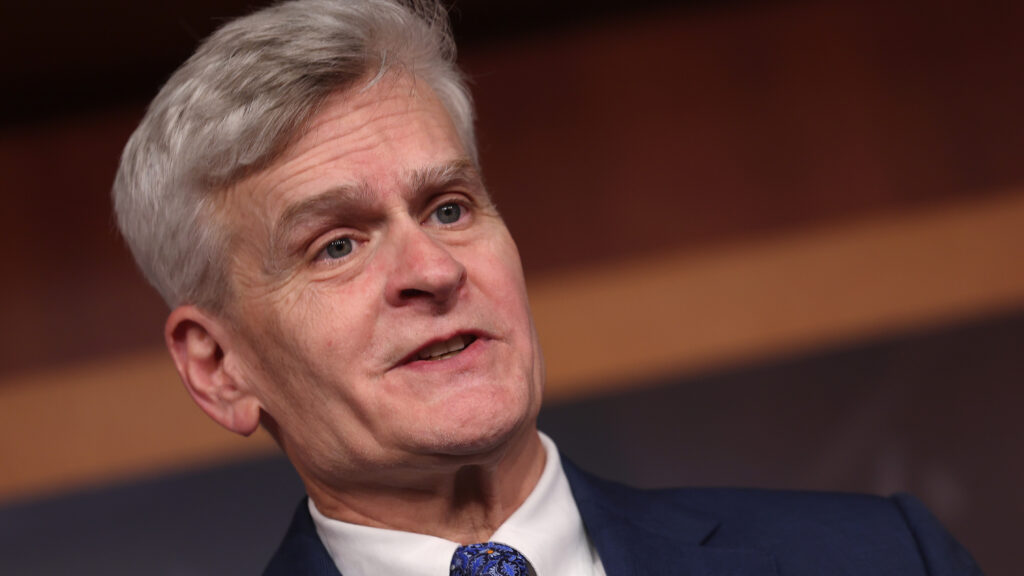WASHINGTON — With Novo Nordisk’s Wegovy and Ozempic hitting blockbuster sales and a new rival approved this week, everyone in Washington is thinking about how to manage the crashing wave of weight loss drug costs.
The explosive national demand for weight management therapies and diabetes drugs like Ozempic — all of which are indicated for indefinite use — has become central in an ongoing policy debate over high drug costs and controversial tactics to manage them, including President Biden’s plan to let the government negotiate directly with pharmaceutical companies. Seventy percent of Americans could qualify for these medicines.
advertisement
Sen. Bill Cassidy (R-La.), the highest-ranking Republican on the Senate’s health policy committee, has vehemently opposed the negotiation plan, arguing it reduces incentives to develop new therapies and may not actually reduce patients’ costs.
The longtime physician floated another possibility, at least for blockbuster obesity drugs: Federal agencies could take the lead on researching ways to transition people off the medicines.
Cassidy spoke recently to an economist who suggested that the National Institutes of Health “should craft sponsor studies where [a patient] would have a year’s worth of treatment, and then you would substitute for Ozempic a dietary therapy” like meal deliveries, he said at the Milken Future of Health Summit.
advertisement
The senator and various economists have warned that it is simply not cost-effective for federal health programs and commercial insurers to pay for lifelong use of weight loss therapies. Ozempic costs about $11,000 a year, while Wegovy’s list price is roughly $16,000. Eli Lilly will sell Zepbound, the latest obesity therapy approved by the Food and Drug Administration on Wednesday, at a list price of $1,059.87 per month.
For now, though, Medicare is barred from paying for this class of drugs. Cassidy and other lawmakers from both parties have introduced legislation to allow coverage in the federal program, which could open the door to more than 60 million Americans.
Novo and Lilly have conducted many analyses conveying the message that their therapies, by reducing the rates of diabetes and heart disease, would save costs down the road, making the price tag worth it for society. But many independent studies have not found the treatments to be cost-effective. A recent analysis by researchers at the University of Chicago found that even at a 75% discount, Wegovy would not be cost-effective for lifetime use.
Novo also hired a lobbying firm this year to push for Medicare coverage.
“We empirically know that some are going to do well” on a limited-use run and some won’t, Cassidy acknowledged. But even if a certain amount of people in the study return to weight loss drugs, costs are better managed, he argued.
The senator stressed during the panel that there would be no one-size approach to bringing down costs, including the Biden negotiation plan. “When it comes to drug costs, there is not a silver bullet there. So there’s silver buckshot.”
Still, a limited-use study could be yet another call for the NIH to take a more active role in the drug price conversation. Cassidy’s comments landed the same day that Monica Bertagnolli assumes the director role, after the Senate confirmed her to the post this week.
Cassidy’s colleague, HELP Chairman Bernie Sanders, stalled her nomination and ultimately voted against her confirmation because Bertagnolli would not commit to requiring drugmakers who use NIH research to reasonably price the resulting medicines. Cassidy opposes the so-called reasonable pricing clause that Sanders pushed and on Wednesday also criticized the committee chair’s approach to pharmaceutical companies.
“Senator Sanders is not sympathetic to the profit motive in medicine, and feels as if a lot of this innovation would take place without that profit motive,” he said. “I’m not giving carte blanche to the companies … they will push the envelope upon which they can charge. But also, we’ve still got to be aware of the powerful impact on innovation, and I want to make sure that we preserve that incentive.”
Elaine Chen and Damian Garde contributed to this report.

